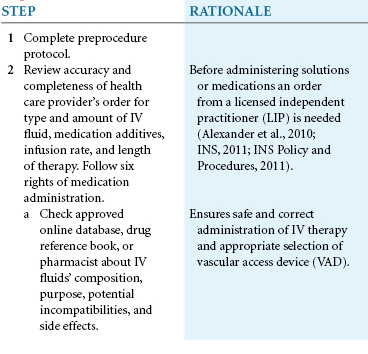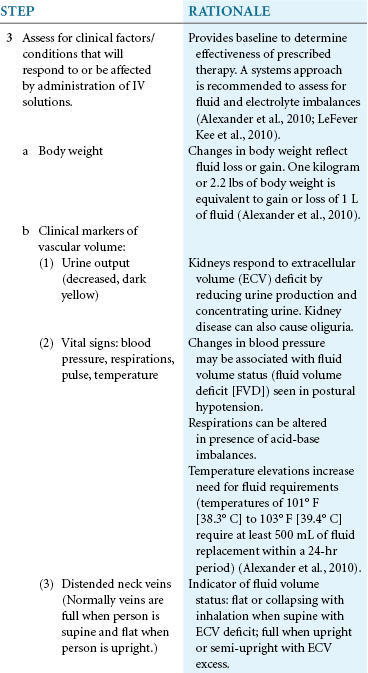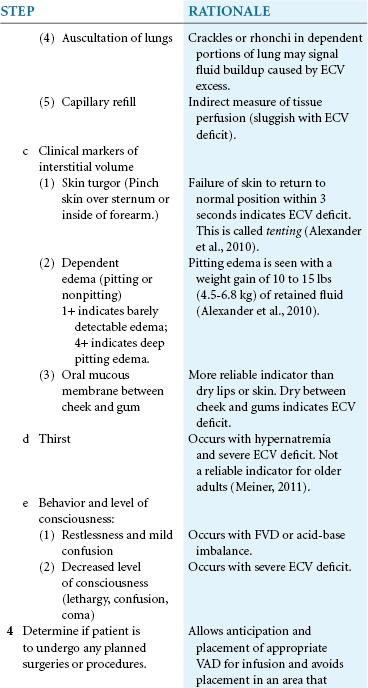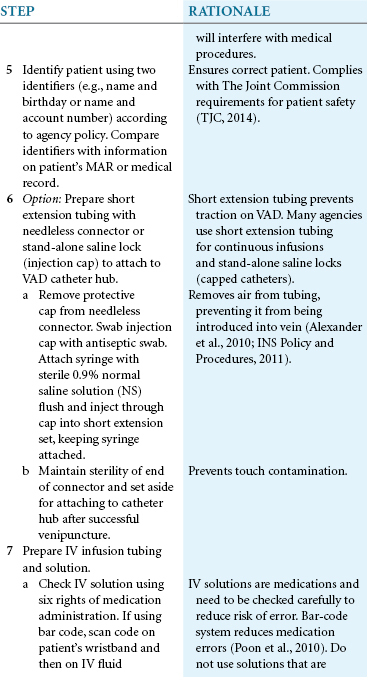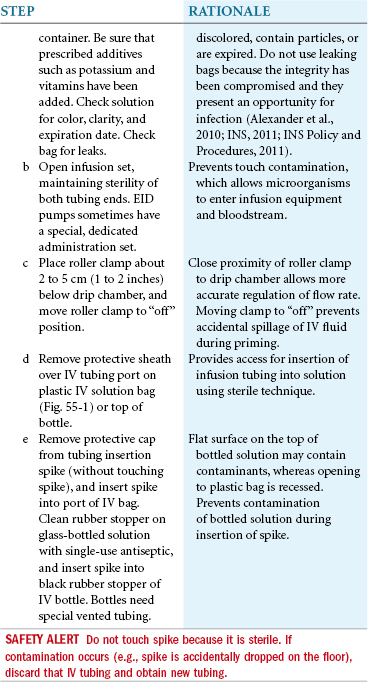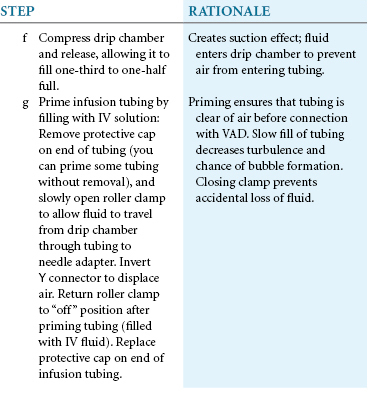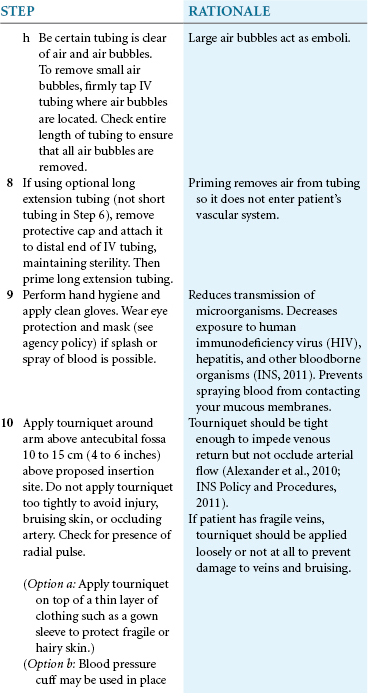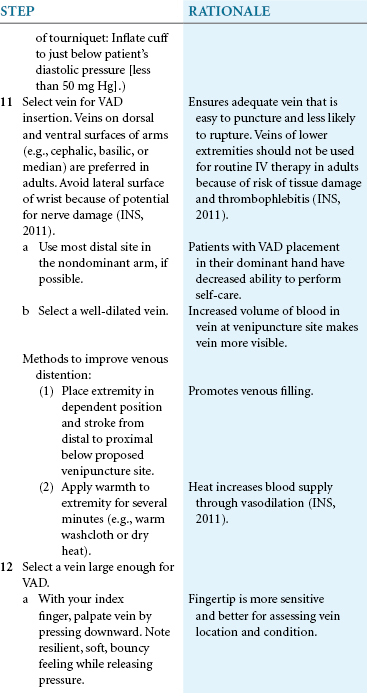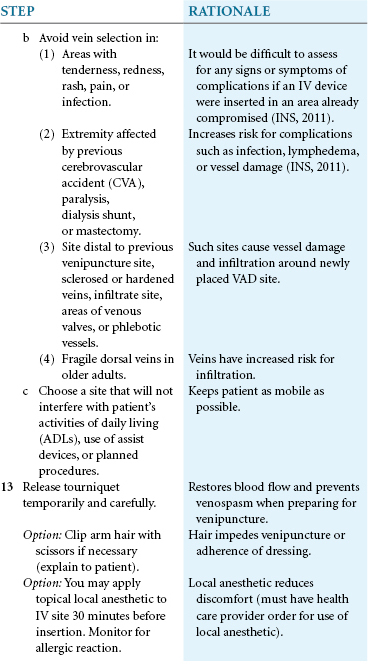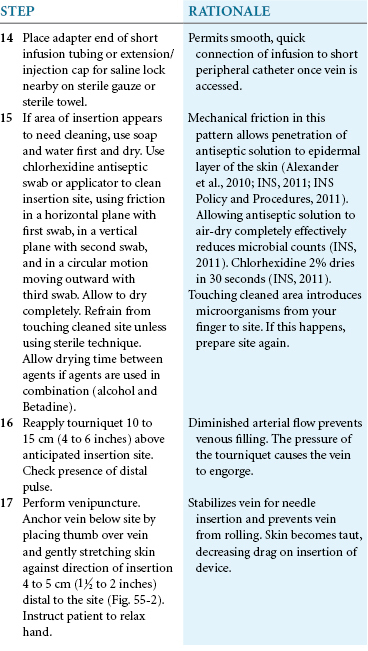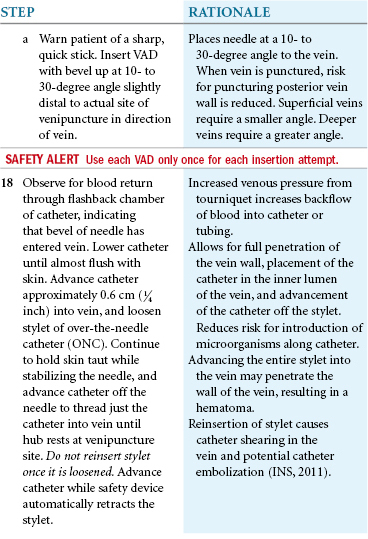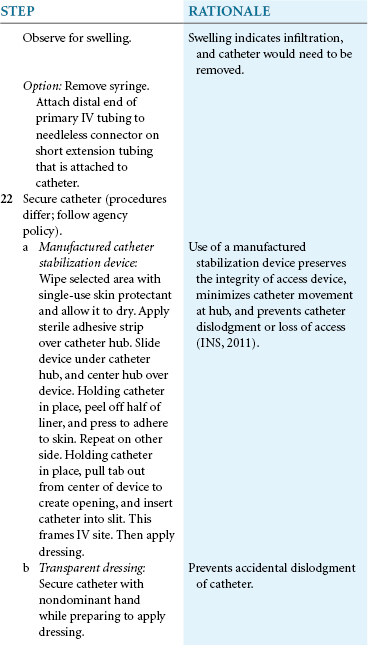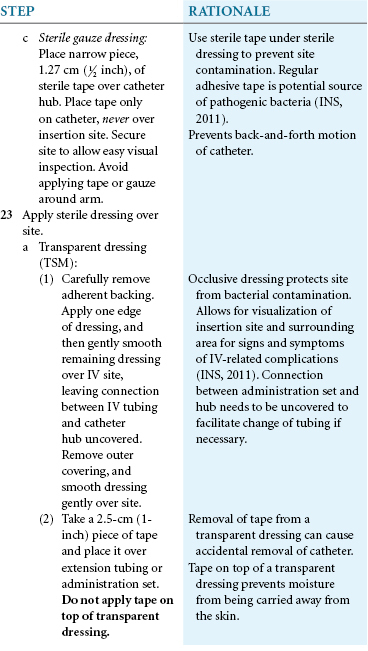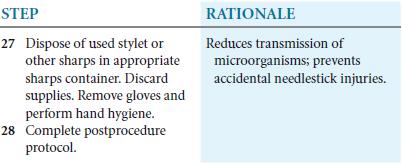Skill 55
Peripheral Intravenous Insertion
Infusion therapy provides access to the venous system to deliver solutions and medications or blood and blood products. Reliable venous access for infusion therapy administration is essential. Your role is to select the appropriate vascular access device (VAD) needed to place a short peripheral intravenous (IV) catheter or to assist clinicians with placement of a midline or central vascular access device (CVAD). In addition, skills are needed to prepare the infusion equipment and become familiar with the various infusion systems used during an infusion. Some solutions and medications can be administered continuously, whereas others are given intermittently. Knowledge about the various types of administration sets, needleless devices, extension sets, flushes, and pumps and skills for their correct and safe use are required. Know and follow INS standards, your agency policy and procedures, and state or government practice guidelines when providing IV therapy.
Delegation Considerations
The skill of initiating IV therapy cannot be delegated to nursing assistive personnel (NAP). Delegation to licensed practical nurses (LPNs) varies by state Nurse Practice Act. The nurse instructs the NAP to:
Equipment
▪ Appropriate short peripheral IV catheter for venipuncture (Select the smallest gauge and length possible to administer the prescribed therapy [INS, 2011].)
▪ Clean gloves (latex-free for patients with latex allergy)
▪ Extension set with needleless connection device (also called saline lock, heparin lock, IV plug or adapter)
▪ Prefilled 5-mL syringe with flush agent (preservative-free normal saline [NS], 0.9% normal saline solution [NSS] [INS, 2011])
▪ Stabilization device (optional) and skin protectant
▪ Prescribed intravenous solution
▪ 0.2-micron filter for nonlipid (fat emulsions) solutions (may be incorporated into the infusion set)
▪ Protective equipment: goggles and mask (optional, check agency policy)
▪ IV pole, rolling or ceiling mounted
▪ Watch with second hand to calculate drip rate
▪ Special patient gown with snaps at shoulder seams if available (makes removal with IV tubing easier)
▪ Needle disposal container (also called sharps container or biohazard container)
